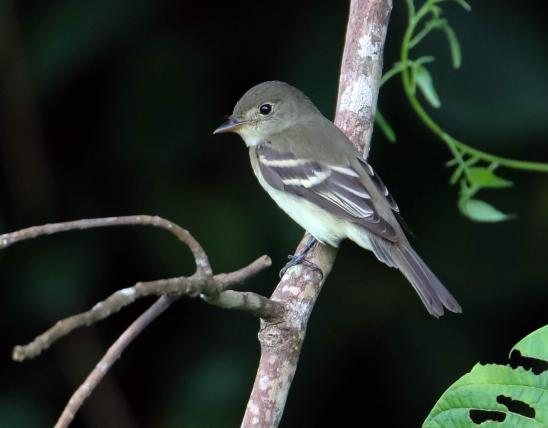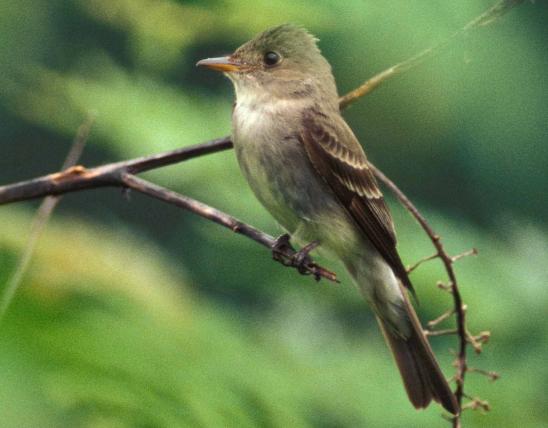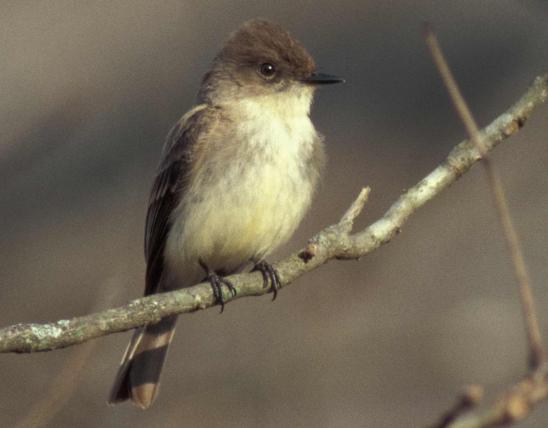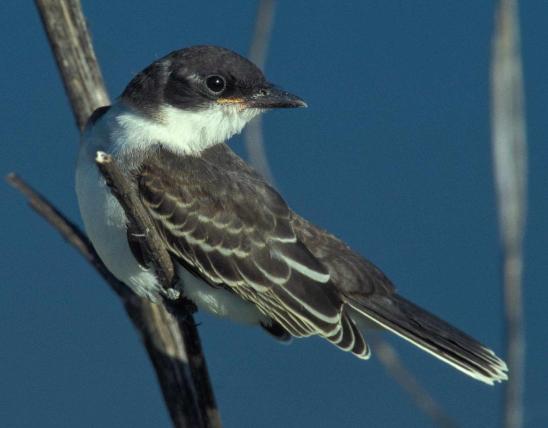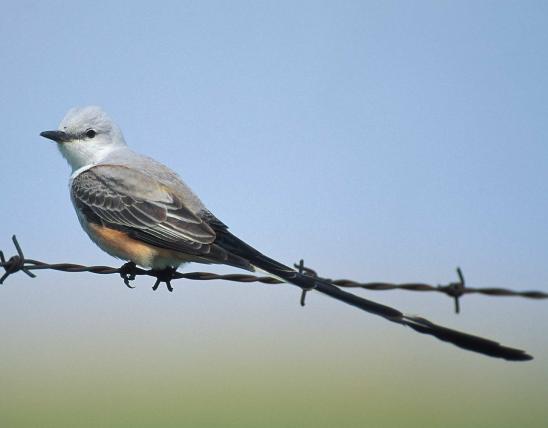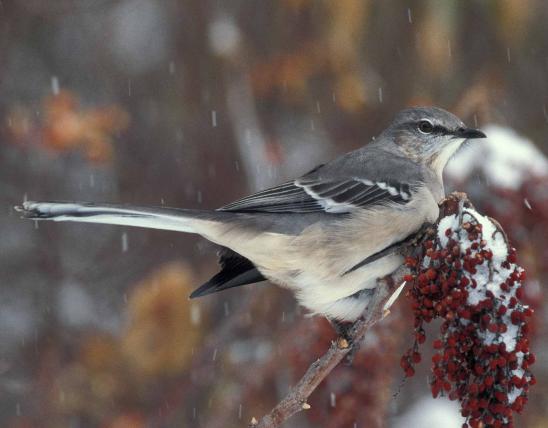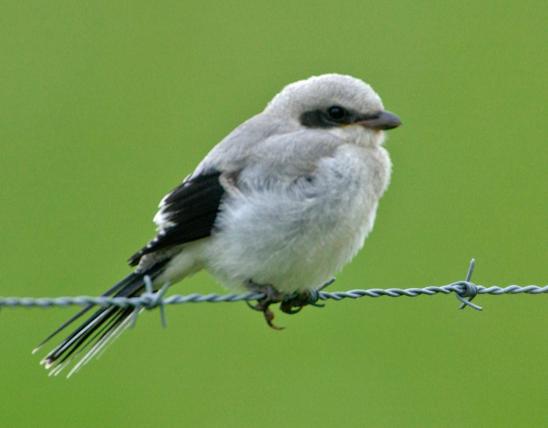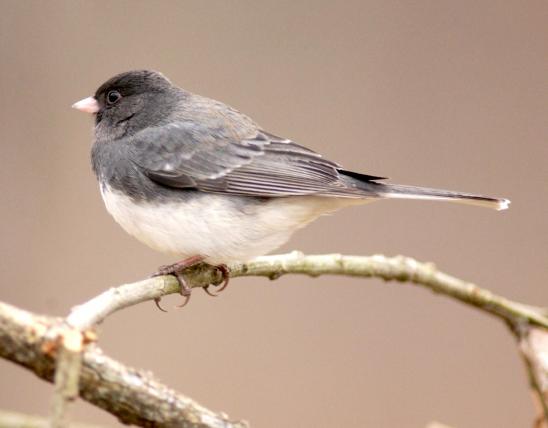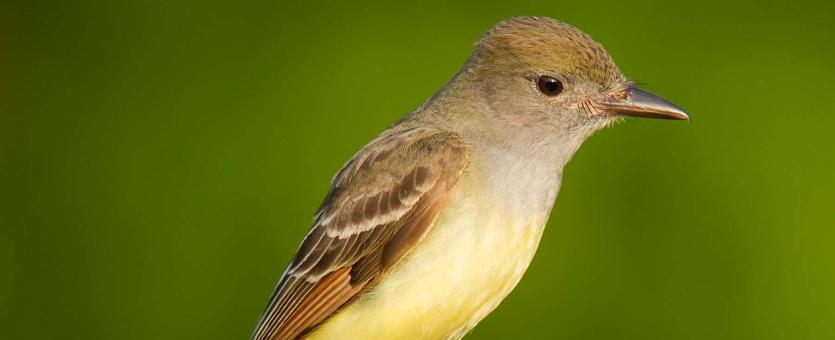
Great crested flycatcher adult upperparts are dark olive-gray, with reddish-brown wings; the brownish-gray crest is rounded. The bill is mostly dark with a pale yellowish-orange base. The throat and upper breast are gray; the belly and under tail feathers are bright (or light) lemon yellow. The tail is dark from above but shows a reddish or rufous inner web on each tail feather from below. Voice includes a loud, brief WHEE-ipp or a rolling harsh prrreet!
Similar species: Missouri has 14 species in the tyrant flycatcher family: 2 pewees, 2 phoebes, 3 kingbirds, 5 Empidonax species, the vermilion flycatcher (which is only casual), and the great crested flycatcher.
Length: 8¾ inches (about the size of a cardinal).
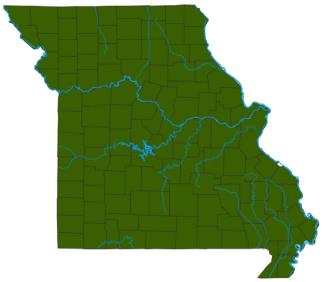
Statewide.
Habitat and Conservation
Usually seen in forests, woodlands, and wooded parks. This is an edge-dwelling species: it prefers places where wooded areas adjoin grassy places. Therefore, anything that creates openings in the woods increases habitat for this species. But such fragmentation can be bad news for other species that need large tracts of unbroken woods or unbroken grassy areas. Great-crested flycatchers typically forage from high, exposed perches in tall trees. Singing males, however, usually hide among foliage and might be hard to see.
Food
Forages from perches in the upper parts of trees for flying insects. Many beetles are eaten, including several types of weevils, true bugs, grasshoppers, moths, and moth larvae. Like most other flycatchers, this species forages from exposed perches that offer an unobstructed view of insects passing by, and clear airspace for catching them.
Status
Common summer resident.
Life Cycle
Present in Missouri from mid-April through late September; overwinters from Florida, to southern Mexico and Central America, Cuba, and northwestern South America. This bird nests in hollow trees, former woodpecker holes, bluebird boxes, mailboxes, pipes, or other cavities. The female uses a wide variety of materials in nest building. Clutches comprise 4–8 eggs, which are incubated 13–15 days. The chicks begin to leave the nest after another 13–15 days. There is only 1 brood. A great crested flycatcher can live to be at least 14 years old.
Human Connections
Birds that eat insects are generally appreciated by people, as they keep destructive pests at bay. Writer George Gladden commented that there is something “uncanny” about the great-crested flycatcher. Its “wheep” call, he said, “is not only unmusical, but has an unearthly ring, as though the bird were trying to conjure gnomes and hobgoblins”; to him, it fit with the bird’s “elusive and mysterious manners, and its evident desire to be let alone.”
Ecosystem Connections
Many people have commented on this bird’s curious habit of incorporating shed snakeskin into its nest. In addition to the predictable twigs, leaves, grasses, plant stems, moss, and bark, other nest materials include animal hair, feathers, shells of snails and other molluscs, cloth, paper, eggshells, and cellophane. Each of these materials connects the flycatcher to another animal or plant species — including us.
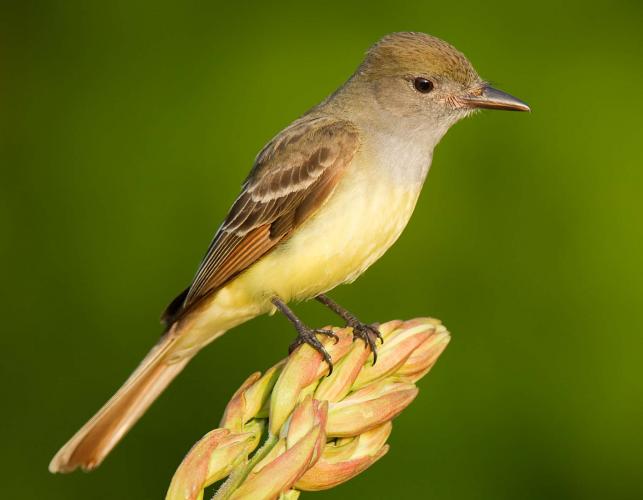
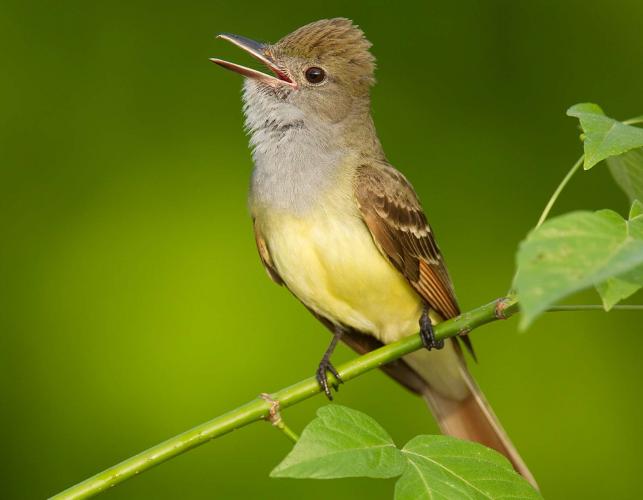
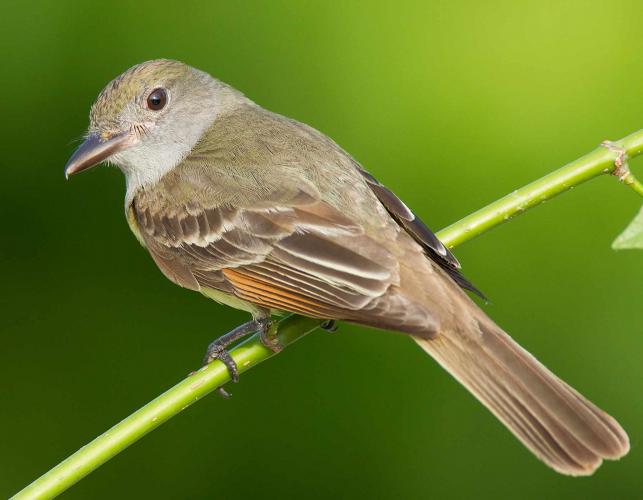
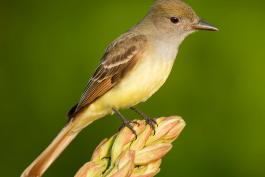
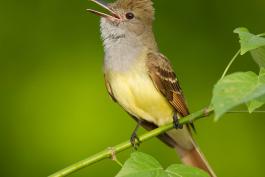
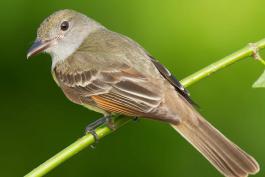
About 350 species of birds are likely to be seen in Missouri, though nearly 400 have been recorded within our borders. Most people know a bird when they see one — it has feathers, wings, and a bill. Birds are warm-blooded, and most species can fly. Many migrate hundreds or thousands of miles. Birds lay hard-shelled eggs (often in a nest), and the parents care for the young. Many communicate with songs and calls.






















